Related Research Articles

Paul Gardner Allen was an American business magnate, computer programmer, researcher, investor, and philanthropist. He is best known for co-founding Microsoft Corporation with his childhood friend Bill Gates in 1975, which helped spark the microcomputer revolution of the 1970s and 1980s. Microsoft went on to become the world's largest personal computer software company. Allen was ranked as the 44th-wealthiest person in the world by Forbes in 2018, with an estimated net worth of $20.3 billion at the time of his death.

The Space Needle is an observation tower in Seattle, Washington, United States. Considered to be an icon of the city, it has been designated a Seattle landmark. Located in the Lower Queen Anne neighborhood, it was built in the Seattle Center for the 1962 World's Fair, which drew over 2.3 million visitors.
Windermere Real Estate is a real estate company founded in 1972 and based in Seattle, Washington. It is a privately held company and is the largest regional real estate company in the Western U.S., with over 300 offices and 6,500 agents.
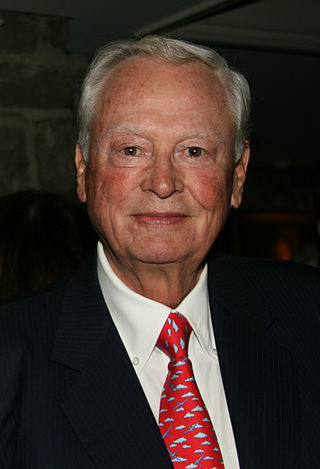
William Barron Hilton was an American business magnate, philanthropist and sportsman. The second son and successor of hotelier Conrad Hilton, he was the chairman, president and chief executive officer of Hilton Hotels Corporation and chairman emeritus of the Conrad N. Hilton Foundation. Hilton, a notable pilot and outdoorsman, was also a founder of the American Football League as the original owner of the Los Angeles Chargers, and helped forge the merger with the National Football League that created the Super Bowl. Like his father before him, he pledged 97 percent of his wealth to the humanitarian work of the Conrad N. Hilton Foundation. At the time, the gift was projected to increase the foundation's endowment from $2.9 billion to $6.3 billion, and will make his estate the organization's most significant donor.

SS Absaroka was a steamer, named after the Absaroka Range of mountains in Montana and Wyoming, completed in February 1918 for the United States Shipping Board (USSB) which briefly operated the ship. From 17 September 1918 to 4 March 1919 the ship was commissioned as USS Absaroka with the identification number IX-2581 in United States Navy and operated by the Naval Overseas Transportation Service.

The Seattle-Tacoma Shipbuilding Corporation was an American corporation which built escort carriers, destroyers, cargo ships and auxiliaries for the United States Navy and merchant marine during World War II in two yards in Puget Sound, Washington. It was the largest producer of destroyers (45) on the West Coast and the largest producer of escort carriers of various classes (56) of any United States yard active during World War II.
Bagley Wright was an American real estate developer and philanthropist. He was president of Bagley Wright Investments, was a developer of Seattle's landmark Space Needle and chair of Physio Control Corp. from 1968 until its acquisition by Eli Lilly and Company in 1980. Wright and his wife Virginia were well known art patrons and philanthropists.
Herman Sarkowsky was a Seattle, Washington, United States businessman, philanthropist, thoroughbred breeder, and former sports executive. He was a co-founder of two Pacific Northwest sports franchises, the Portland Trail Blazers and the Seattle Seahawks.
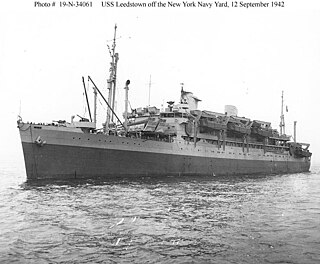
USS Leedstown (AP-73), built as the Grace Line passenger and cargo ocean liner SS Santa Lucia, served as a United States Navy amphibious assault ship in World War II. The ship had first been turned over to the War Shipping Administration (WSA) and operated by Grace Line as the WSA agent from February to August 1942 in the Pacific. In August the ship, at New York, was turned over to the Navy under sub-bareboat charter from WSA. She was sunk 9 November 1942 off the Algerian coast by a German submarine after German bombers caused damage the day before.
Matthew Norton Clapp was a successful businessman, and eventually served as chairman of the Weyerhaeuser Corporation. He was active in civic service and a philanthropist.
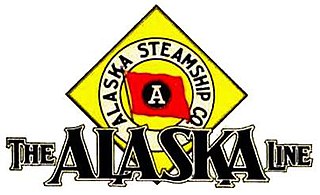
The Alaska Steamship Company was formed on August 3, 1894. While it originally set out to ship passengers and fishing products, the Alaska Steamship Company began shipping mining equipment, dog sleds, and cattle at the outbreak of the Klondike Gold Rush of 1897. The company was purchased by the Alaska Syndicate and merged with the Northwestern Steamship Company in 1909, but retained its name, and the fleet was expanded to 18 ships. During World War II, the government took over the company's ships. When the war ended, the company struggled to compete with the new Alaska Highway for passengers and freight. It discontinued passenger service altogether in 1954 and shut down operations in 1971.

SS Manchuria was a passenger and cargo liner launched 1903 for the San Francisco-trans Pacific service of the Pacific Mail Steamship Company. During World War I the ship was commissioned 25 April 1918–11 September 1919 for United States Navy service as USS Manchuria (ID-1633). After return to civilian service the ship was acquired by the Dollar Steamship Line in 1928 until that line suffered financial difficulties in 1938 and ownership of Manchuria was taken over by the United States Maritime Commission which chartered the ship to American President Lines which operated her as President Johnson. During World War II she operated as a War Shipping Administration transport with American President Lines its agent allocated to United States Army requirements. After World War II, she was returned to American President Lines, sold and renamed Santa Cruz. The liner was scrapped in Italy in 1952.

The Pacific Steamship Company was a US freight and passenger shipping company that operated between 1916 and 1936. The company was formed by the merger of the Pacific Coast Steamship Company and the Pacific-Alaska Navigation Company and was a direct competitor to the Alaska Steamship Company in the Alaska-Seattle shipping business. Pacific Steamship Co. owned and operated The Admiral Line and The Admiral Oriental Line. American Mail Line worked with the Admiral Oriental Line.
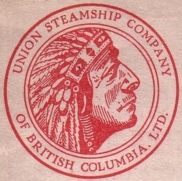
The Union Steamship Company of British Columbia was a pioneer firm on coastal British Columbia. It was founded in November 1889 by John Darling, a director of the Union Steamship Company of New Zealand, and nine local businessmen. The company began by offering local service on Burrard Inlet near Vancouver and later expanded to servicing the entire British Columbia coast.

The Skinner & Eddy Corporation, commonly known as Skinner & Eddy, was a Seattle, Washington-based shipbuilding corporation that existed from 1916 to 1923. The yard is notable for completing more ships for the United States war effort during World War I than any other West Coast shipyard, and also for breaking world production speed records for individual ship construction.

Joshua Green was an American sternwheeler captain, businessman, and banker. He rose from being a seaman to being the dominant figure of the Puget Sound Mosquito Fleet, then sold out his interests and became a banker. Living to the age of 105 and active in business almost to the end of his life, he became an invaluable source of information about the history of Seattle and the Puget Sound region. According to Nard Jones, Green was one of the city of Seattle's last fluent speakers of Chinook Jargon, the pidgin trade language of the Pacific Northwest.

USAHS Marigold was a United States Army hospital ship during World War II. The ship was built as Old North State in 1920 for the United States Shipping Board as a civilian passenger/cargo liner. The ship changed ownership and operating companies several times with name changes to President Van Buren and President Fillmore before being acquired for military transport service in 1941. After government acquisition during World War II President Fillmore served as a War Shipping Administration troop transport before conversion to hospital ship service.
Northland Transportation Company operated cargo and passenger ships from Seattle to Southeast Alaska starting in 1923. During World War II Northland Transportation Company was active in charter shipping with the Maritime Commission and War Shipping Administration. Northland Transportation Company, proposed a loan from United States Shipping Board to build a ship for Puget Sound-Alaska trade in 1933. In 1934, the company was granted a $350,000 loan to build a new ship. The 1,400 tons passenger ship, was built at Lake Washington Shipyard in Houghton, Washington. Northland Transportation Company Seattle dock and warehouse were at Pier 56, now Ainsworth and Dunn Wharf.
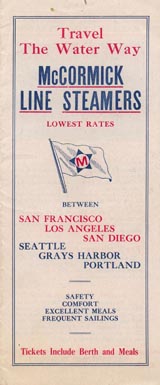
Charles R. McCormick Lumber Company was founded in 1908 by Charles R. McCormick in San Francisco, California. McCormick purchased a mill site in St. Helens, and formed the Helens Mill Company. To feed the mill McCormick's St. Helens Timber Company also purchased 4,000 acres of timber. In 1912 McCormick formed the St. Helens Lumber Company as parent company over Helens Mill Company and the St. Helens Timber Company. In 1912 McCormick expanded the company with a second sawmill, a creosoting plant and shipyard, the St. Helens shipyard. McCormick also expanded into San Diego, California with a railroad ties factory, to supply Santa Fe Railway and the mines of Utah, Arizona, New Mexico, and northern Mexico. At the San Diego site, he built a dock to unload his timbers. With the Great Depression slow down, McCormick closed dock at San Diego in April 1931.